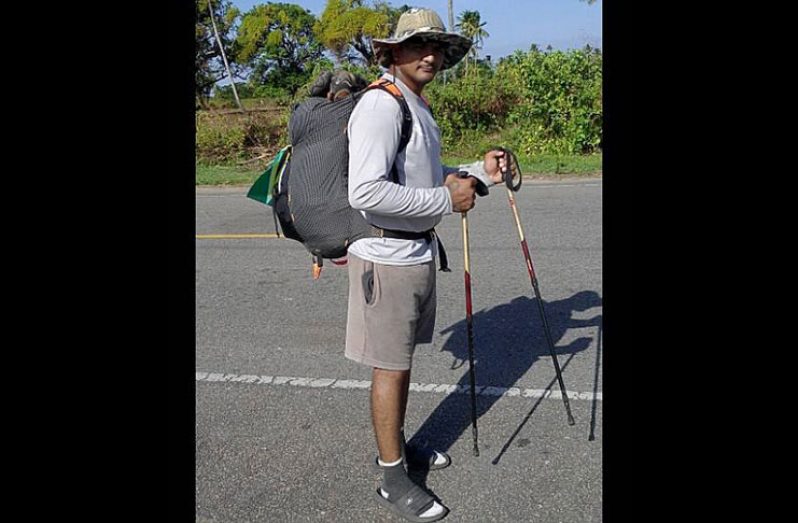THE BEAUTY of 83,000 sq. miles is often overlooked, not because of the absence of a patriotic spirit, but the limited opportunities to absorb and appreciate the social, cultural and environmental elements which make this society a unique one.

Indeed, in an era dominated by technological advancement and the phenomenon of globalization, it is rare to see someone casually pack a haversack and embark on a journey for a few days; entirely by foot. However, it is not non-existent, at least not in Guyana.
Backpacking has been around in Guyana for quite a number of years. It is a form of low-cost, independent travel, done primarily by foot. It includes wilderness adventures, local travel and travel to nearby countries, where travellers carry their possessions on their backs in a backpack.
Though tedious and physically demanding, the experience is worth more than the sacrifice. And no one knows this better than Roberto Tewari, who started backpacking in Guyana last year.
Despite being a newcomer, Tewari has managed to walk from Georgetown to Mahaicony (54.4km or 34 miles); Georgetown to Parika (43km or 27 miles); a shorter distance of Tuschen to Parika (8.4kim or 6 miles); and the entire Essequibo Coast, from Charity to Supenaam (65km or 40 miles).
According to the backpacker, this hobby has provided him with the opportunity to generate a greater appreciation for this country and its fascinating culture and scenery, which are often take for granted.
“Walking allows me to see places that I usually drive past quickly every day in a slow motion way. I get to pay attention to so much more details about the surroundings. Even though I would pass these places routinely, walking made me realise how much I was missing out on. It’s like you are able to capture every single detail one step at a time” he passionately shares.
This, unfortunately, is the reality for many Guyanese. Quite often the rich social and cultural ingredients that make Guyana a melting pot are overlooked. But according to Tewari, backpacking provides an appreciation for country by connecting people to the surroundings and detaching them from worldly obligations.
“All my troubles seem to be a distant memory when I hit the road. I am able to appreciate the skill of a coconut vendor shaving a coconut, while inhaling the fresh Atlantic breeze. I can observe trees dancing in the wind without music. I am able to see the patience and calmness of men catching fish in a nearby trench. These are the things which foreign countries and the developed world cannot offer us and we usually take it for granted,” the traveller says.
But more than just appreciation for country, backpacking offers health benefits, both mental and physical. Tewari explains that the journey on foot is physically demanding, but what is also necessary for a successful trip is mental strength to continue when one feels like giving up.
“It puts the body through tremendous pressure, especially if the journey is very long. You need to keep yourself hydrated at all times. Even if you’re walking through the rain, your body needs to be hydrated.”
Equally important, he continues, is having basic travel necessities such as water and snacks and extra clothing if there is need to change. Should the trip be an overnight one, Tewari says that the necessary gear becomes a lot more. Added to that short list would be things such as a hammock, tent or sleeping bag, repellant and flashlights among other stuff.
However, he noted that the trick is to pack the haversack with its weight in mind, since it would have to be carried on the back throughout the journey. Therefore, the lighter the backpack, the easier the journey and the faster you are able to travel.
He revealed too, that another trick if you are going to overnight, is to start looking for somewhere safe to sleep as early as in the afternoon. This is due to the fact that it might be difficult to assess the safety of an area when it is dark and this could be a security risk.
That aside, the adventurer believes that the experience is one on which a price tag cannot be put. He describes it as “easy and fun” and suggests that newcomers begin with short distances and gradually increase the distance they walk.
He credits his exposure to backpacking to his friend, Ric Couchman, another local backpacker who has travelled greater distances across Guyana. Couchman, who has a wealth of experience in backpacking, is currently in the process of writing a book titled “Following the Blue Morpho,” which delivers an insight into backpacking in Guyana.




.png)









